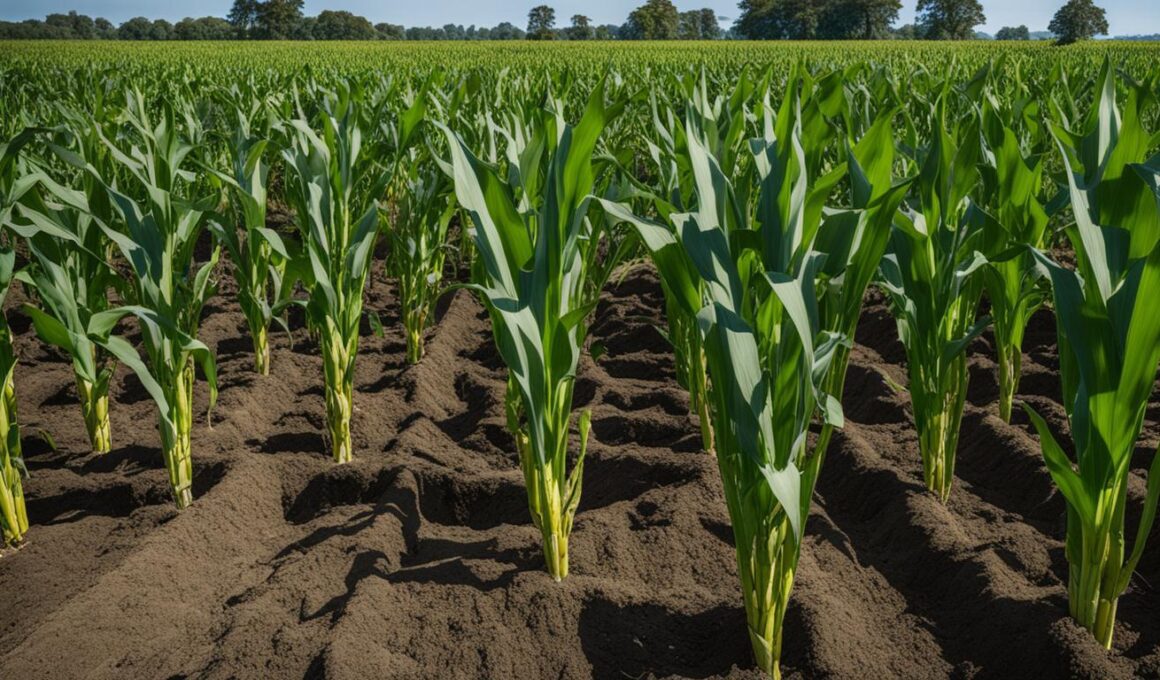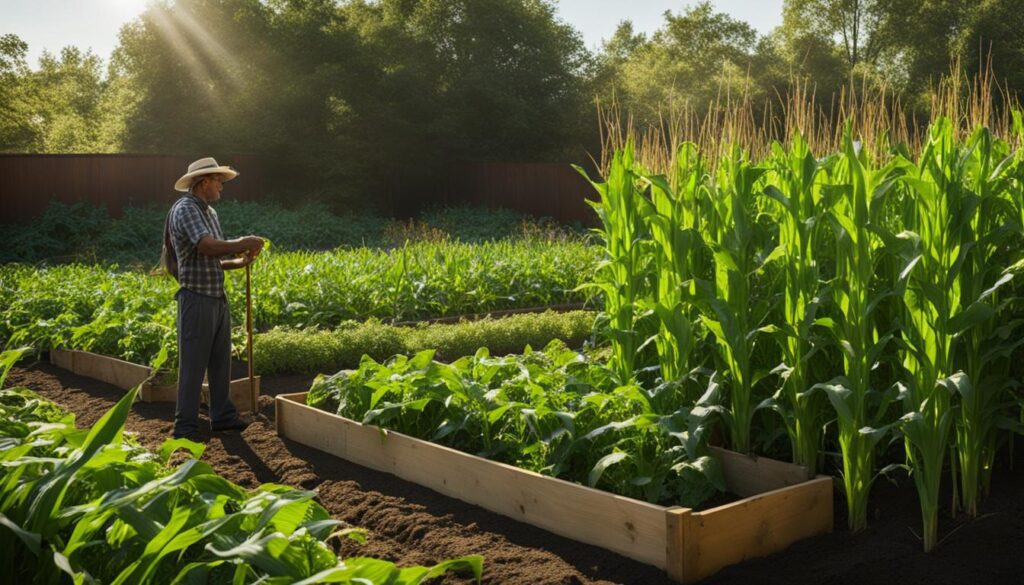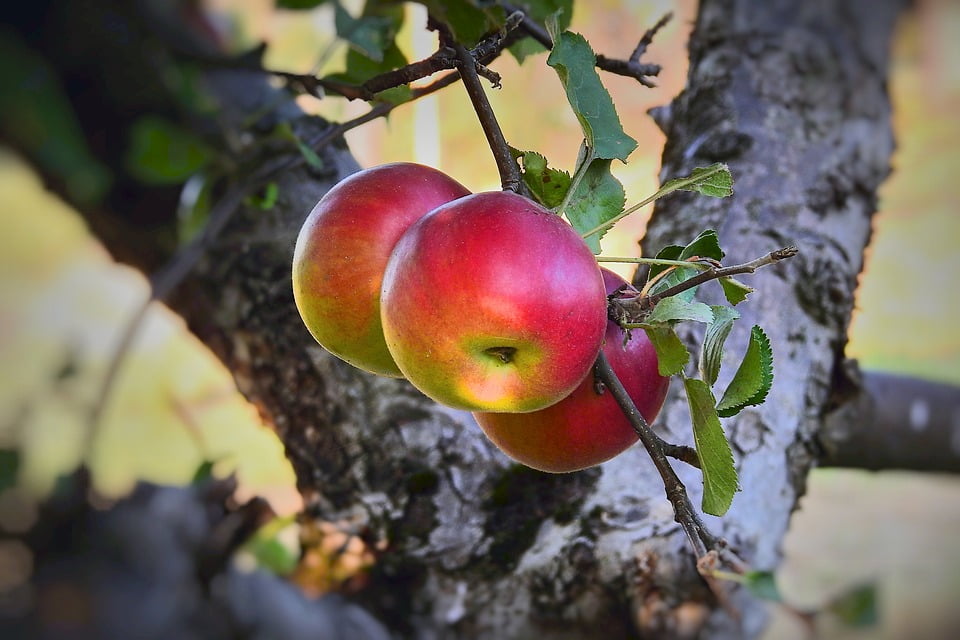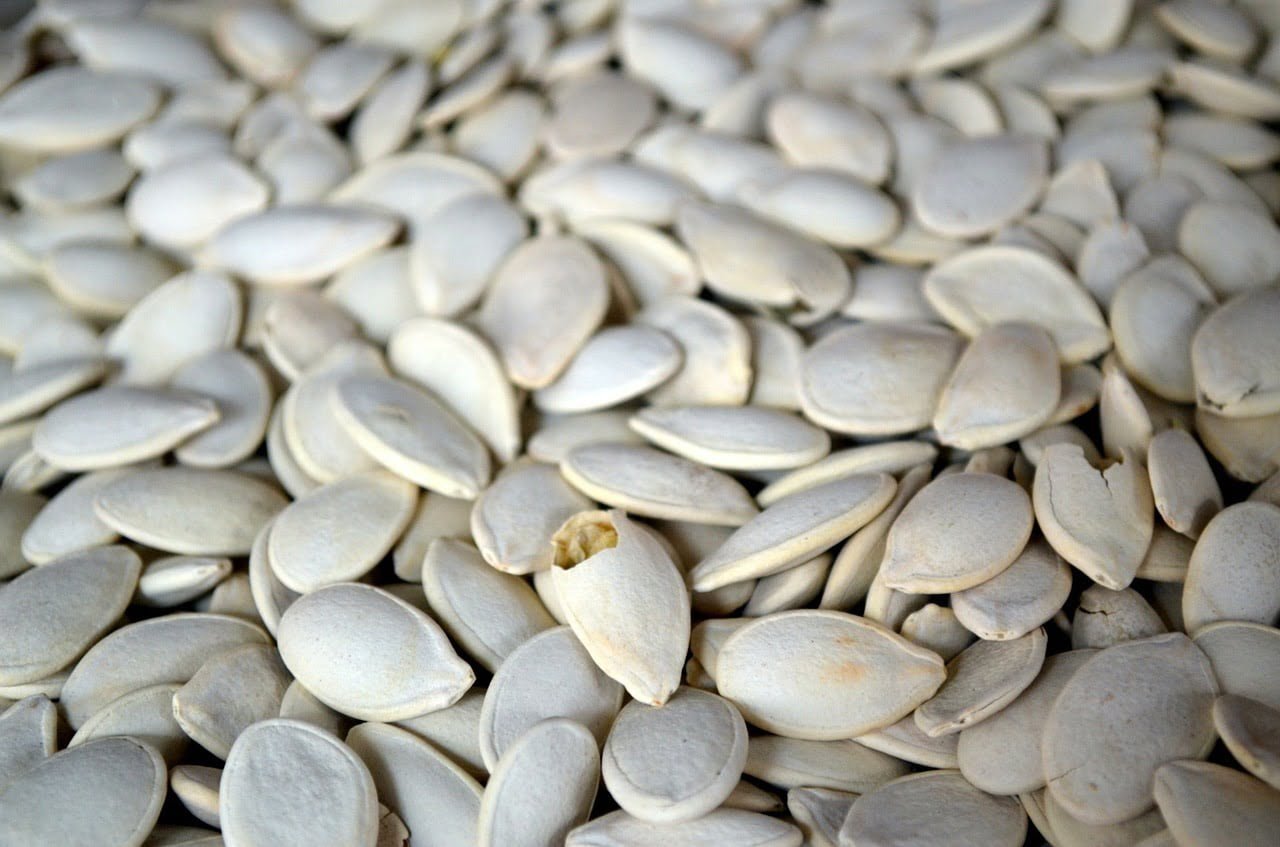According to the National Agricultural Statistics Service (NASS), corn is the largest crop grown in America, covering over 92 million acres. As home gardeners, you can take control of your food supply by growing corn in your backyards. Despite the common belief that corn requires a lot of space, it can be grown in raised beds or even containers. In this article, we will explore the best practices for growing corn in a raised bed to maximize your harvest in a space-saving and efficient way.
Post Summary:
- Growing corn in a raised bed allows you to maximize your harvest in a space-saving and efficient way.
- Contrary to popular belief, corn can be successfully grown in raised beds or even containers.
- Selecting the right sweet corn variety is important for a successful harvest.
- Starting corn from seed is the most common and cost-effective method.
- Proper spacing and sunlight exposure are essential for growing corn in a raised bed.
How to Grow Corn in Containers or Totes
Growing corn in containers or totes is a great option for those with limited space or access to traditional garden plots. Container gardening allows you to maximize your harvest while adding a decorative element to your outdoor space. Here’s how you can grow corn in containers or totes:
Choosing the Right Container
To grow corn successfully, you’ll need a container that is at least 12 inches deep. However, for optimal root growth and stability, it’s recommended to use containers that are 16 inches deep. It’s also important to choose a container that is wide enough to prevent tipping over. Larger containers, such as 30-gallon totes, provide a more stable base and allow for the growth of multiple corn plants.
Providing Adequate Watering
When it comes to container gardening, watering is crucial. Corn plants require consistent moisture levels to ensure proper growth and development. Make sure the container has drainage holes to prevent waterlogged soil. Water regularly, especially during hot summer months, to keep the soil evenly moist. Adding a layer of mulch around the plants can help retain moisture and keep the roots cool.
Ongoing Care and Maintenance
In addition to watering, container-grown corn plants will benefit from regular fertilization. Use a balanced fertilizer, following the manufacturer’s instructions, to provide the necessary nutrients for healthy growth. Monitor the plants for any signs of pests or diseases and take appropriate action if needed. It’s also important to provide adequate sunlight, as corn plants require full sun for optimal growth.
By following these tips and providing the right conditions, you can successfully grow corn in containers or totes. Enjoy the satisfaction of harvesting your own fresh corn, even in a limited space!
How to Grow Corn in Raised Beds or SIPs
Growing corn in raised beds is a simple and effective method that allows you to optimize your harvest. Whether you have limited garden space or want to take advantage of the benefits of raised bed gardening, this technique is perfect for growing corn. In addition, self-watering planters, also known as SIPs, can provide an excellent solution for maintaining consistent moisture levels and promoting healthy growth.
Benefits of Growing Corn in Raised Beds
Raised bed gardening offers several advantages for growing corn. First, it provides better soil drainage, preventing waterlogged roots and reducing the risk of root rot. Second, raised beds warm up faster in the spring, accelerating seed germination and promoting early growth. Third, the weed control is easier in raised beds, as the defined space limits the spread of weeds. Fourth, raised beds allow for better soil structure, which promotes root development and nutrient absorption. Finally, the raised bed height provides better access for planting, weeding, and harvesting, reducing strain on your back and knees.
| Benefits of Growing Corn in Raised Beds: |
|---|
| Better soil drainage |
| Faster seed germination |
| Easier weed control |
| Improved soil structure |
| Easy access for planting and harvesting |
Using Self-Watering Planters (SIPs) for Corn
SIPs are an excellent option for growing corn in raised beds. These planters feature a water reservoir that allows for consistent moisture levels, reducing the risk of under or over watering. The reservoir also helps conserve water, making SIPs an eco-friendly choice. When using SIPs for corn, it’s important to ensure proper sunlight exposure and nutrient availability. Place the SIPs in a sunny location where the corn can receive at least six hours of direct sunlight per day. Additionally, supplement the soil with organic matter or fertilizer to ensure adequate nutrition for the corn plants.
“Growing corn in raised beds or SIPs provides optimal growing conditions and convenience. The controlled environment allows for better soil drainage, faster seed germination, and easier weed control. With self-watering planters, maintaining proper moisture levels becomes a breeze. Enjoy fresh, homegrown corn with the satisfaction of efficient gardening.” – Gardening Expert
By following these tips, you can successfully grow corn in raised beds or self-watering planters. Enjoy the rewards of homegrown, delicious corn while maximizing your gardening space and efficiency.
Which Sweet Corn Variety to Choose?
When it comes to choosing the right sweet corn variety for your garden, there are a few factors to consider. Whether you prefer a traditional corn flavor or something with a bit more sweetness, selecting the right cultivar will ensure a successful and delicious harvest. Additionally, opting for GMO-free corn allows you to grow your corn with peace of mind. Here are some popular sweet corn varieties to consider:
Sugary (SU) Corn Varieties
Known for their old-fashioned corn flavor, sugary corn varieties are perfect for those who appreciate the classic taste. These varieties have a short shelf life and should be cooked soon after picking. Some popular sugary corn varieties include ‘Silver Queen’ and ‘Luscious’.
Supersweet (SH2) Corn Varieties
Supersweet corn varieties are known for their extra sweetness. These corn varieties have higher sugar content and can be stored for several days before cooking. If you prefer a sweeter corn, consider ‘Mirai’ or ‘Ambrosia’.
Sugar Extended (SE) Corn Varieties
Sugar extended corn varieties are known for maintaining their sweetness even longer, making them a great choice for warm growing conditions. Varieties like ‘Bodacious’ and ‘Obsession’ fall into this category and are highly regarded for their flavor and texture.
When selecting a sweet corn variety, make sure to choose one specifically for fresh eating. Some varieties are better suited for popcorn or ornamental purposes. Refer to the seed packets or consult with a local garden expert for more information on which variety will best suit your needs. Happy planting!
| Cultivar | Flavor | Shelf Life | GMO-Free |
|---|---|---|---|
| Silver Queen | Classic corn flavor | Short | Yes |
| Luscious | Classic corn flavor | Short | Yes |
| Mirai | Extra sweet | Several days | Yes |
| Ambrosia | Extra sweet | Several days | Yes |
| Bodacious | Maintains sweetness | Longer | Yes |
| Obsession | Maintains sweetness | Longer | Yes |
How to Grow Corn From Seed
Growing corn from seed is a simple and cost-effective way to start your corn crop. To begin, you’ll need to ensure the soil temperature is warm enough for germination, ideally between 60-85°F. Prepare the soil by removing any weeds or debris and creating a smooth, level surface for planting.
- Planting Depth: Dig a small hole, about 1 inch deep, for each corn seed. You can plant 2-3 seeds in each hole to compensate for any spotty germination. Cover the seeds with soil and gently pat it down to ensure good seed-to-soil contact.
- Germination: Keep the soil consistently moist but not waterlogged throughout the germination process. This can take anywhere from 7 to 10 days, depending on the weather conditions. Be patient and avoid overwatering, as excessive moisture can lead to rotting.
- Starting Indoors: If you want to get a head start on your corn crop, you can pre-germinate the seeds indoors. Place the seeds between damp paper towels in a sealed plastic bag and keep them in a warm location. Check the seeds daily, and once they have sprouted, carefully transplant them into individual pots.
Once the corn seedlings reach around 4 inches tall, it’s time to transplant them into your garden or raised bed. Choose a sunny spot with well-draining soil and good air circulation. Ensure the soil is warm and frost-free before transplanting to avoid any setbacks in growth.
“Growing corn from seed allows you to have full control over the quality and variety of your crop. With a little patience and care, you’ll be rewarded with delicious homegrown corn that you can enjoy all summer long.”
| Common Mistakes to Avoid | Tips for Success |
|---|---|
| Overwatering: Excessive moisture can lead to rotting and poor germination. Only water when the top inch of soil feels dry. | Consistent Moisture: Keep the soil consistently moist but not waterlogged during the germination process. Water deeply once the plants are established. |
| Planting Too Deep: Planting corn seeds too deep can delay germination. Aim for a planting depth of around 1 inch. | Proper Planting Depth: Plant corn seeds at a depth of around 1 inch, ensuring good seed-to-soil contact for optimal germination. |
| Poor Soil Preparation: Neglecting to prepare the soil properly can result in poor growth and nutrient deficiencies. | Preparation is Key: Remove any weeds or debris and create a smooth, level surface for planting. Amend the soil with compost or organic matter to improve fertility. |
Remember to provide your corn plants with regular water, especially during dry spells, and monitor for any signs of pests or diseases. With proper care and attention, you’ll soon be enjoying a bountiful harvest of homegrown corn!
How Deep to Plant Corn Seeds?
When it comes to planting corn seeds, the recommended depth is typically around 1 inch. However, some farmers may choose to plant them as deep as 3 inches. The decision on planting depth can depend on various factors, including soil temperature, moisture levels, and texture. Deeper planting can help anchor the roots and provide better support for the growing corn plants, especially in loose potting mix substrates. Additionally, planting deeper may be beneficial in lighter and sandy soils, as it helps to ensure that the seeds have enough moisture for germination.
It’s important to note that soil temperature also plays a significant role in determining the optimal planting depth for corn seeds. Seeds should be sown when the soil temperature reaches around 50-55°F for proper germination. Planting too shallow in cooler soils can lead to slower germination or even seedling damage. On the other hand, planting too deep in warmer soils can delay emergence and affect overall plant development.
Proper seed depth is crucial for the successful establishment of corn plants. Planting at the appropriate depth allows the roots to develop and access the necessary nutrients and moisture in the soil. It’s essential to consider the specific conditions of your garden, such as soil type and temperature, and adjust the planting depth accordingly to promote healthy growth and maximize your corn harvest.
How Far Apart to Space Corn?
When it comes to spacing corn, the ideal plant spacing can vary depending on the growing method you choose. In traditional farming techniques, corn is typically spaced 8-12 inches apart within rows, with rows spaced 24-36 inches apart. However, if you’re growing corn in small mounds or blocks, you can plant them much more densely.
For optimal pollination and kernel development, it’s recommended to plant corn in a block pattern, with at least 3 x 3 plants. This dense planting method helps ensure that the corn plants are close enough to effectively pollinate each other, leading to better yields and full ears. In a raised bed or grid system, you can space corn plants about 10 inches apart, allowing for efficient use of space while still promoting good pollination.
It’s crucial to provide corn with a bright spot in your garden that receives full sun exposure. Corn is a sun-loving crop, and without sufficient sunlight, it may not develop properly and may produce smaller ears. So make sure to choose a location where your corn plants will receive a minimum of 6-8 hours of direct sunlight per day.
The Importance of Proper Spacing
Spacing your corn plants appropriately is essential for successful growth and optimal yields. When corn plants are spaced too closely together, they can compete for resources such as water, nutrients, and sunlight. This competition can lead to stunted growth, weak stalks, and smaller ears. On the other hand, if corn plants are spaced too far apart, it can result in missed pollination opportunities and reduced yields.
By following the recommended spacing guidelines, you can create a balanced and productive corn garden. Remember to consider the specific conditions of your garden and adjust the spacing accordingly. Whether you’re planting in containers, raised beds, or traditional garden plots, providing enough space for each corn plant is crucial for a bountiful harvest.
| Spacing Method | Plant Spacing | Row Spacing |
|---|---|---|
| Traditional Farming | 8-12 inches within rows | 24-36 inches between rows |
| Dense Planting (Blocks) | 3 x 3 plants (or closer) | N/A |
| Raised Bed or Grid System | 10 inches between plants | N/A |
Conclusion
Growing corn in a raised bed is an excellent choice for maximizing your harvest in an efficient and space-saving manner. Contrary to popular belief, corn can thrive in raised beds or even containers, making it accessible to home gardeners of all sizes. By following the recommended practices outlined in this article, you can enjoy a bountiful supply of homegrown corn.
When selecting a sweet corn variety, be sure to choose one that is GMO-free and suited for fresh eating. Starting from seed is the most cost-effective option, and proper germination techniques will ensure successful growth. Pay attention to planting depth and spacing, adjusting them to match the specific conditions of your garden.
Whether you opt for containers, raised beds, or self-watering planters, the key to successful corn cultivation lies in providing optimal growing conditions. Offer your plants sufficient sunlight exposure and maintain consistent moisture levels. By adhering to these guidelines and embracing efficient gardening practices, you can enjoy the satisfaction of growing your own delicious corn at home.
FAQ
Can corn be grown in containers or totes?
Yes, corn can be successfully grown in containers or totes. The container should be at least 12 inches deep, but 16 inches is preferred for optimal root space and stability. Avoid using narrow containers to prevent tipping over, and consider using larger containers for more stable growth. Consistent watering is important for container gardening.
How do I grow corn in raised beds or SIPs?
Growing corn in raised beds is a simple and effective method. The recommended depth should not exceed 4 feet, unless there is access from both sides. Planting corn in blocks improves pollination and harvest quality. Self-watering planters, or SIPs, can be a great option for growing corn. Proper sunlight exposure and nutrient availability are essential.
What sweet corn variety should I choose?
It’s important to choose a sweet corn variety specifically for fresh eating. Consider factors such as color, maturity days, and ear size. Look for GMO-free corn cultivars. There are different types of sweet corn genes, including sugary (SU), supersweet (SH2), and sugar extended (SE), each with its own characteristics and shelf life.
How do I grow corn from seed?
Growing corn from seed is the most common and cost-effective method. Corn seeds require warm soil temperatures to germinate properly. Plant 2-3 seeds in each hole to ensure successful emergence. Pre-germinating seeds indoors is possible but more labor-intensive. Transplant seedlings outside once they reach around 4 inches tall.
How deep should I plant corn seeds?
The recommended planting depth for corn seeds is typically 1 inch, although some farmers may plant as deep as 3 inches. The depth can vary depending on factors such as soil temperature, moisture, and texture. Deeper planting can provide better support for the plant, especially in loose potting mix substrates.
How far apart should I space corn plants?
Corn is typically spaced 8-12 inches apart within rows, with rows spaced 24-36 inches apart in traditional farming techniques. In small mounds or blocks, corn can be planted much more densely. In a raised bed or grid system, corn can be planted with 10 inches of spacing between each plant.











